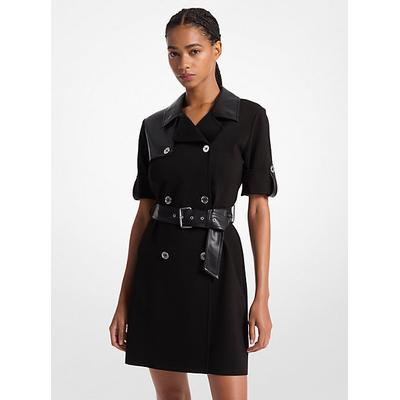Hey Diva dressing fans! When the items we love coincide with brands we work with, Diva dressing will use Paid Links in our articles. If you decide to click on these links and purchase the product, we get a small commission. Our Opinions Are Our Own, but we do add Paid Links as a way to offer these products at no added cost to our readers. Want to know more? Click Here to check out our Terms of Use anytime!
Fashion industry is rapidly evolving, driven by technological advancements, sustainability concerns, and changing consumer behaviors. As a result, the way future designers are educated must also transform to meet these new challenges. Fashion education is no longer just about teaching students how to create beautiful clothes; it’s about preparing them to navigate a complex, global industry that demands innovation, ethics, and adaptability.
As the fashion industry faces increasing scrutiny for its environmental impact, sustainability is becoming a core component of fashion education. Students today are learning not only about aesthetics and trends but also about how to create garments with minimal environmental footprints. This shift is crucial as consumers demand more ethical and eco-conscious products.
- Circular fashion: Many fashion schools are incorporating lessons on the principles of circular fashion designing products with longevity, repairability, and recyclability in mind. This involves teaching students how to create clothing that can be disassembled or repurposed at the end of its life cycle.
- Ethical production practices: Students are also being educated on fair labor practices, the importance of transparency in the supply chain, and the impact of fashion production on communities and workers around the world. Ethical design is now a fundamental topic in most fashion programs, encouraging future designers to prioritize responsibility alongside creativity.
Technology is revolutionizing the way fashion is designed, produced, and marketed. From 3D design software to virtual showrooms and the rise of digital fashion, students must now be proficient in the latest tech tools and trends to succeed in the future fashion landscape.
- 3D fashion design: Many fashion programs are teaching students how to use 3D modeling software, such as Clo3D or Marvelous Designer, to create virtual prototypes and test designs without the need for physical samples. This not only speeds up the design process but also reduces waste.
- Virtual and augmented reality: Fashion education is increasingly incorporating VR and AR tools to allow students to create immersive, digital experiences. Virtual fashion shows and AR shopping experiences are becoming popular, and students need to understand how these technologies can enhance their future brands.
- Digital fashion and NFTs: As digital fashion and non-fungible tokens (NFTs) gain momentum, some fashion schools are exploring how these innovations can be leveraged by students. Digital garments, which exist solely in virtual spaces, are becoming a new frontier for self-expression, creativity, and commerce.
Collaboration Across Disciplines
The future of fashion is interdisciplinary, requiring collaboration between designers, engineers, scientists, marketers, and more. Fashion schools are beginning to emphasize the importance of working across fields to develop innovative solutions and address the complex challenges facing the industry.
- Fashion and science: Programs are increasingly merging fashion design with material science, biology, and engineering. For example, students might collaborate with scientists to create sustainable fabrics from biodegradable or lab-grown materials, such as mycelium leather or algae-based textiles.
- Business and entrepreneurship: Aspiring designers are now expected to have a solid understanding of business, marketing, and entrepreneurship. Fashion education is evolving to include courses on running a successful fashion brand, digital marketing strategies, and consumer behavior, helping students navigate the commercial side of the industry.
- Fashion and technology: The intersection of fashion and technology is expanding, with schools encouraging collaborations with tech developers to create wearable tech, smart fabrics, and data-driven design solutions.
Globalization and Cultural Awareness
Fashion is a global industry, and designers must understand the cultural, economic, and social forces that influence fashion trends and production around the world. Many fashion programs are emphasizing the importance of cultural sensitivity, global awareness, and diversity in design.
- Cultural sensitivity: Understanding the cultural significance of certain garments, materials, or design practices is essential for creating fashion that is respectful and inclusive. Fashion schools are working to ensure that students understand the dangers of cultural appropriation and learn to design with cultural appreciation in mind.
- International opportunities: Fashion schools are increasingly offering international study programs, exchange opportunities, and collaborations with designers from different countries. These experiences help students gain a broader perspective on global fashion markets and design practices.
New Business Models: From Slow Fashion to Direct-to-Consumer
As traditional retail models become less dominant, fashion education is shifting its focus to emerging business models such as direct-to-consumer (DTC) and slow fashion. These models prioritize sustainability, transparency, and building closer relationships between designers and consumers.
- Slow fashion: Students are being taught to embrace the principles of slow fashion, which values quality, craftsmanship, and intentionality over mass production. This approach focuses on creating timeless, durable pieces that consumers will cherish for years, rather than following fleeting trends.
- Direct-to-consumer models: With the rise of e-commerce, students are learning how to develop brands that can connect directly with their audience through online platforms. Understanding digital marketing, social media strategies, and e-commerce platforms is essential for future designers who want to build successful brands.
Diversity and Representation in Fashion
Fashion has long been criticized for its lack of diversity and representation, but this is changing as educational institutions recognize the need to address these issues in the classroom. Fashion programs are increasingly focused on fostering an environment where students from diverse backgrounds can thrive, and where inclusive design is prioritized.
- Representation in design: Fashion schools are encouraging students to design for all body types, genders, and ethnicities. Lessons on inclusivity and representation are becoming integral parts of fashion curricula, with schools pushing for diversity in student projects, portfolios, and runway presentations.
- Breaking industry norms: Fashion educators are challenging traditional industry standards that promote exclusivity. Instead, they encourage students to think critically about the future of fashion and how it can be more accessible and representative of all people.
Preparing for the Future of Work
The future of work in fashion is evolving, and education must adapt to prepare students for an industry that is increasingly freelance, remote, and collaborative. As traditional career paths shift, fashion schools are focusing on equipping students with skills for entrepreneurship, digital workspaces, and flexible career options.
- Freelance and entrepreneurship: Many fashion programs now offer courses on starting your own brand, freelancing, and navigating the gig economy. Students are encouraged to think like entrepreneurs and build networks that will support them in a constantly changing industry.
- Remote work: With remote work becoming more common, students are learning how to collaborate across digital platforms, communicate with global teams, and manage projects online. These skills are critical for the future of the fashion workforce.
Here are some products you can try on
Lucky Brand Faux Leather Babydoll Slip Dress $13.99
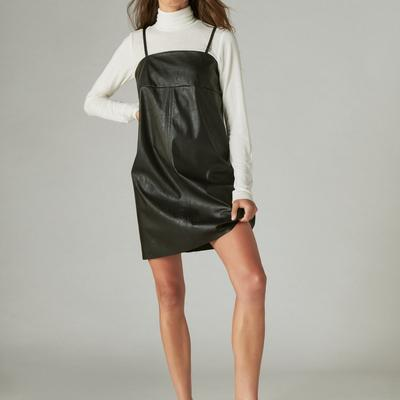
Lucky Brand Paillette Sequin Dress $20.99

Lucky Brand Denim Corset Dress $27.99
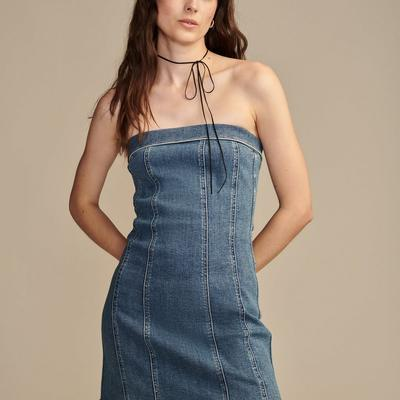
Lucky Brand Sandwash Dress $27.99
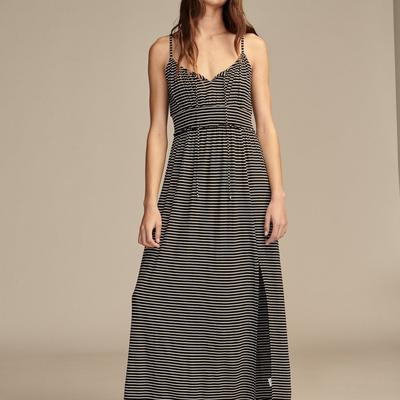
Michael Kors Sequined Jersey Tank Dress $52.80
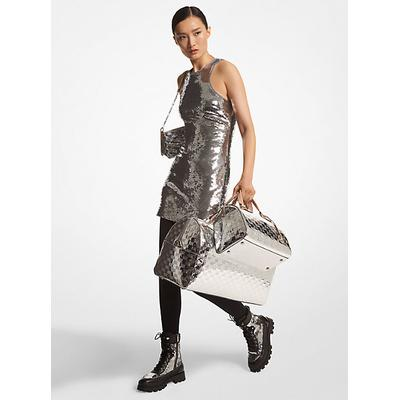
Michael Kors Astor Stud Stretch Knit Long $165.00
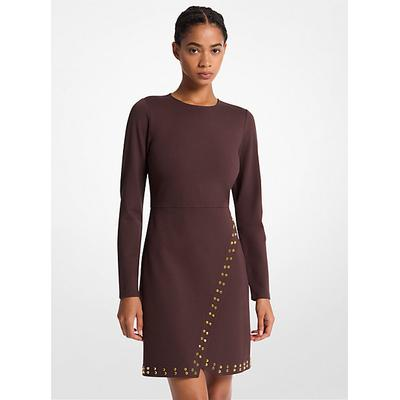
Michael Kors Pleated Metallic Halter Dress $185.00
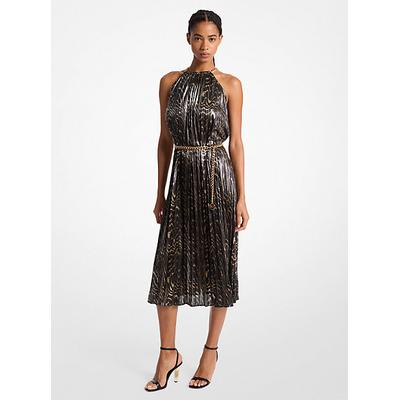
Michael Kors Mixed-Media Trench Dress $195.00
